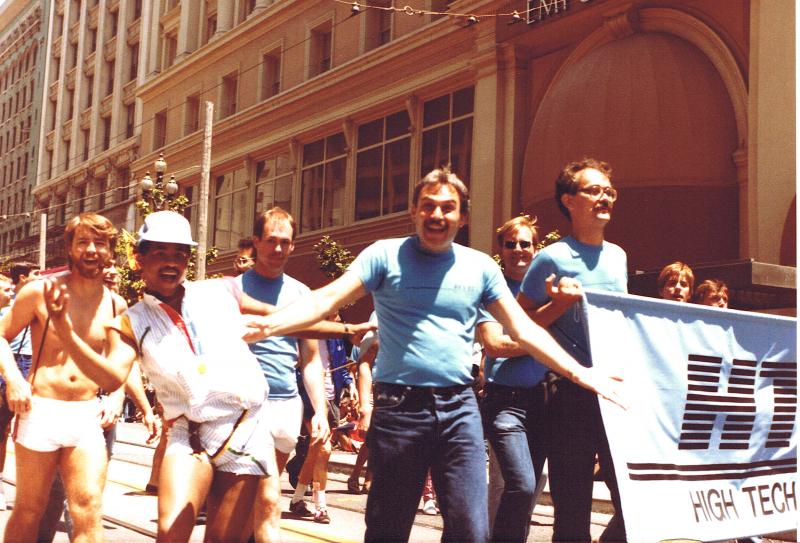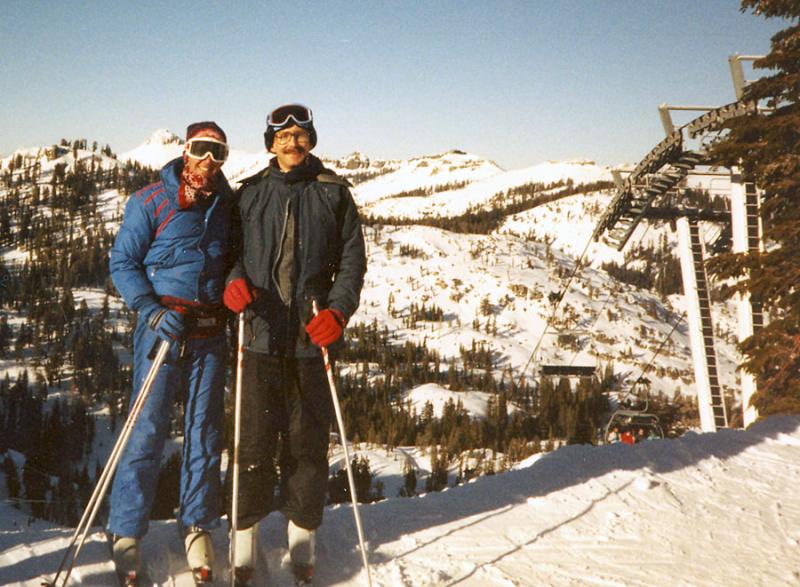In 1983, Rick Rudy was an MIT-trained engineer living in San Jose, working in an industry where putting "High Tech Gays" on a return address envelope could cost you your career. By the time he passed away seven years later, he'd built the largest gay technical professional group in the world and forced the federal government to defend its discriminatory security clearance policies in court.
Rick didn't start out as an activist. He was born and raised in New York City, earned his bachelor's and master's degrees in engineering from MIT, and came to Silicon Valley in the early 1970s to build a tech career like thousands of other engineers flooding into the valley. But in January 1983, he was one of ten people who gathered at the Billy DeFrank Center in San Jose for a meeting of gay engineers and scientists who wanted to find others like them.

By March, they'd formalized as an organization. The founders debated who should lead. Rick and another member suggested co-founder Denny Carroll become president. Carroll refused—he was better suited as secretary, handling the database and logistics. "Everyone agreed that Rick was best 'on center stage,'" the organization's history records. "So Rick would become the perfect spokesperson for the organization. How true that proved to be!"
Rick was elected High Tech Gays' first president in March 1983. In 1984, Rick helped establish HTG's Political and Business Action Committee. They launched a letter-writing campaign to over 100 Silicon Valley companies, demanding they add sexual orientation to their non-discrimination policies.
But Rick also understood the limits of external advocacy. When HTG members started forming employee resource groups inside their companies, Rick championed their work. "If employees ask for it, they feel like they're making a positive change for their own family," he told the Bay Area Reporter in 1989. This dual strategy worked. IBM adopted non-discrimination protections in 1987. Sun Microsystems followed in 1988. By the early 1990s, even historically resistant companies like Hewlett-Packard and Lockheed had changed their policies.

Rick's work expanded beyond Silicon Valley in 1985 when he was elected to the board of the National Gay and Lesbian Task Force. The position brought national media attention—interviews with The Advocate, the Wall Street Journal, and the Mercury News. Political candidates started requesting invitations to speak at HTG meetings.
Rick also helped launch the Bay Area Municipal Elections Committee (BAYMEC), hosting early meetings at his house and helping write their bylaws while juggling national responsibilities and leading HTG.
In June 1984, when HTG member Timothy Dooling asked the organization to join him in a federal class action lawsuit challenging discriminatory security clearance policies, Rick stood at a press conference in the San Francisco Federal Building to announce High Tech Gays v. Defense Industrial Security Clearance Office. For years, he kept members engaged through the legal battles, collected donations, and kept the case visible in the media.

Rick Rudy died in October 1990 at age 44 from complications of AIDS. He'd been with his lover, Steve Completo, for fifteen years. He'd led High Tech Gays from a living room meeting to an organization of 700 members. He'd served on national boards, pushed dozens of companies to adopt non-discrimination policies, and challenged the federal government in court.
After his death, HTG created the Richard P. Rudy Community Service Award. Rick's work continued after his death. In 1995, President Clinton prohibited discrimination based on sexual orientation in security clearances. In 1992, California outlawed job discrimination against the LGBTQ community. The employee resource groups Rick had championed continued to grow.
In seven years, Rick transformed what it meant to be gay in tech. He proved that social connection could build political power, that employee resource groups could change companies from the inside while external pressure pushed from outside, and that an engineer could become an activist without choosing between the two.


.png)






